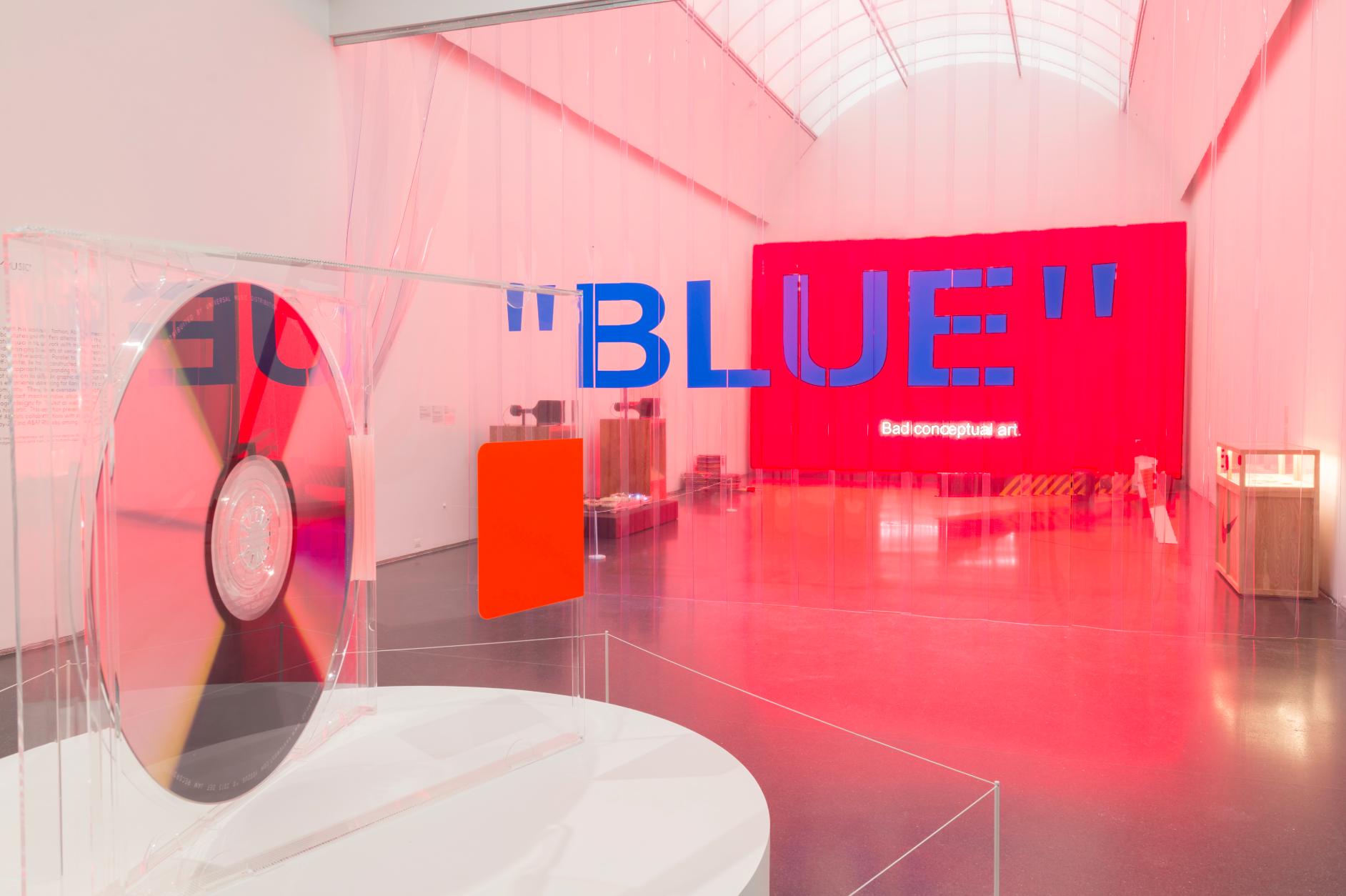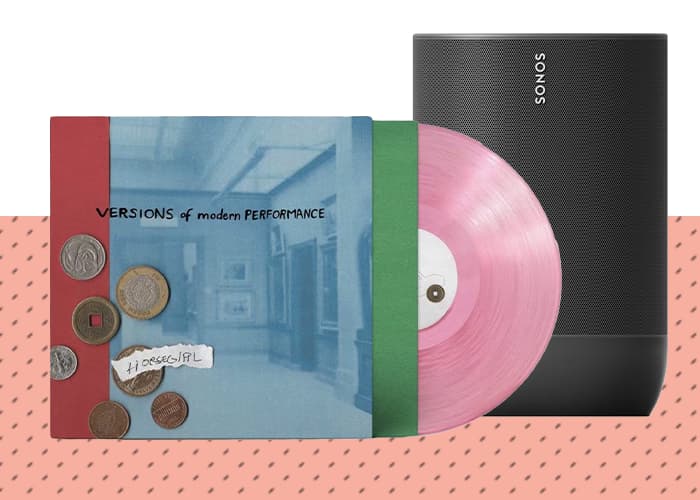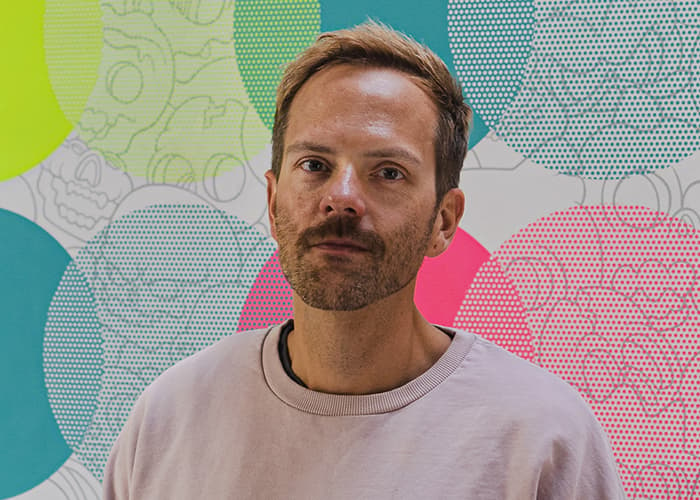Virgil Abloh is the subject of a major solo exhibition, Virgil Abloh: “Figures of Speech,” at the Museum of Contemporary Art Chicago (MCA); Virgil Abloh is 38 years old. The preceding two statements highlight the outsized space that Abloh occupies in contemporary fashion and art, and at such an early stage in his care. Abloh is a force of imagination and creation, reshaping contemporary culture, and the boundaries between popular and high culture. The streets have stormed the tower, with Abloh leading the charge.
Recently, we talked with Michael Darling, the James W. Alsdorf Chief Curator of the MCA, and “Figures of Speech” exhibition curator. Not only did we talk about the exhibition, but Darling also discussed Abloh’s involvement in all aspects of the exhibition, why museums still ignore artists like Abloh, and how limited edition exhibition merchandise is becoming increasingly common.
The following interview has been lightly edited for length and clarity.
[Special thanks to Brian Smith of the Joffrey Ballet for helping to set up this interview.]
StockX: Michael, we appreciate you taking the time to talk with us. So first question, why did you want to organize and mount the “Figures of Speech” exhibition?
Michael Darling: One of the first and early reasons was because Virgil lives and works here; so it was a fascinating Chicago story. And we’re attracted to multidisciplinary artists, who have done lots of shows over the past several years, and people that are breaking boundaries between different genres of art-making and design. Virgil was an architect who is working in fashion and music and doing furniture design. So three years ago, when I started talking to him, all of the things he was doing seemed such an unusual and exciting combination. I thought it would be worth doing an exhibition with him. And then as time has gone on, his influence has grown, and his visibility has increased. It became essential to do this, especially since Virgil continues to live and work in Chicago, that we mounted this exhibition before another city did. That was a motivation for us and this exhibition: making sure we’re paying attention to the best stuff that’s being made in our city.
How involved was Virgil in helping to organize this exhibition?
He was really involved. It was a constant conversation between him and me, especially the first couple of years. At that time, we were thinking about the content and gathering stories from him so that I could tell his story in our book. Then Samir Bantal from AMO, this architecture research firm in the Netherlands, joined us and joined the conversation to help shape it. But Virgil was extremely involved in the process and voicing interest in certain types of work. We had lots of conversations, and he had lots and lots of input about how the exhibition would be laid out and how everything would be displayed and all of that. He’snot someone to delegate a lot of those details to somebody else. He collaborates a lot with other people, but he’s always at the table too. There were very few details with which he didn’t get personally involved.

L-R: Samir Bantal; Virgil Abloh; Michael Darling // photo by Griffin Lipson
Was his level of involvement and collaboration similar to that of other artists with whom you’ve previously worked?
I think it was more involved, more intense. For instance, he wanted to redesign these stanchions we sometimes use to create queues and lines for people. He also got involved in designing the entry wall graphics for the exhibition, which most other artists usually give that over to our graphic design team to do. He worked closely with our advertising and communications team to design our ads. Again, most other artists would let the museum apparatus work on that stuff. For the actual exhibition, his level of involvement was comparable to other artists. All artists care about how their work is displayed, which pieces go together, and relationships within the exhibition space. Beyond the art in the exhibition, he was just genuinely interested in how the whole mechanism works putting on and promoting an exhibition.
What is the relationship between this exhibition and Virgil’s oeuvre within the landscape of contemporary art?
For a while now we’ve seen visual artists that have tried to crossover into other fields. Takashi Murakami was an early pioneer when he started doing his projects with Louis Vuitton, and all the other consumer goods he makes, like skateboards or pillows or things like that. I think Murakami took a lot of, a lot of hits for doing that at first, but now it’s much more commonplace. You see somebody like Sterling Ruby who has built a career in the visual arts. You see Raf Simmons and all the work he does in fashion; you see more and more artists involved with creating c0nsumer products and being involved in the marketplace. But Virgil’s version of that is more intense than everybody else. When you consider his DJing schedule and his fashion designing schedule, it’s unfathomable how he can pull all this off. It’s pretty hard to compare him to other people in that way I would say.

Installation view, Virgil Abloh: “Figures of Speech.” // photo by Nathan Keay, © MCA Chicago
Let’s talk about the pop-up, “Church and State.” Was the idea to always incorporate a pop-up shop with the exhibition?
Yeah, I think the idea was there all along, even before Virgil blew up to the level where he’s at right now. He still really likes making product, and silkscreening t-shirts is the core of his whole creative world. He expressed an interest to make things for the show that would be for sale from the beginning. For an art museum, this arrangement is unusual. Usually, the stuff that’s hanging on the walls or sitting on pedestals and is often for sale through the galleries that represent those artists, and the museum is not involved with selling it. And the price points are usually tens if not hundreds of thousands of dollars.
So operating at this other price point of t-shirts, shirts, notepads, and things like hoodies is a different kind of approach to being able to walk out of the museum with a piece of art. So that’s unusual. It’s not unheard of, but it still feels unusual. When it comes to Virgil, people want to consume the things that he’s making, and they expect to go away with something to remember their visit.

“State and Church” pop-up store at the MCA. // photo by Peter McCulloch, © MCA Chicago
What are some of the MCA’s challenges of managing the massive demand and hype that accompanies Virgil?
We definitely saw a lot of resellers with Murakami, too. You know, with Murakami, our inventory was wiped out during the first days and weeks of Murakami. So we knew that we wanted to have enough stock to make it meaningful for people that didn’t come on the first day. We’ve created a combination of evergreen products that aren’t limited edition that we can keep replenishing as the stock diminishes. We also have limited edition pieces that are selling out, and we’ve been able to have this surprise element as new items in the store. We understand the rhythm of drops a little bit more. We made sure to think through how much stock we had so that we had enough to get us through the exhibition and not have the store emptied by week three.
What surprised you during the production process of the exhibition?
I think it was that thing that I mentioned earlier: how much Virgil really cares about everything and every detail. From the advertising, the topography, the merchandise, the book, the stanchions guiding people into the exhibition, he has such a holistic view, and he cares about the whole package. I think that was impressive, especially when you consider that our exhibition is only one of many things that he’s got on his plate at the moment. It’s mind-boggling to think that he can bring this level of commitment to all of these different things that he does. So I think that’s one of the things that’s amazing about him.

Been Trill group DJing, including Justin Saunders, Heron Preston, Virgil Abloh, and Matthew Williams. // photo by Matthieu Genre
What does Virgil’s success portend for the future of art?
I think what Virgil is doing helps shine a light on his generation of peers. Especially people who are coming up through non-traditional channels and working across disciplines, outside of fine art. If you think about Matthew Williams, Samuel Ross, Heron Preston, and people like that, there are so many people from his world that are starting to get real recognition. When you look at all of these people, most honed their worldview and vision through streetwear, skateboarding, hip-hop, and stuff like that. It’s all a cousin of contemporary art with som many shared values, ideas, and approaches. I think what Virgil’s success is going to do is open up space for a better appreciation of streetwear culture. It could have a more critical and more respected place in the pantheon of cultural production.
Michael, this was great. Before we go, is there anything else you’d like to add?
Hopefully, this show creates an example for other museums and commercial art galleries to look at artists like Virgil and the type of work he does. I hope that “Figures of Speech” is the first of many of these kinds of projects and exhibitions.

Installation view, Virgil Abloh: “Figures of Speech” // photo by Nathan Keay, © MCA Chicago
“Figures of Speech” runs through September 29, 2019, at the MCA.























